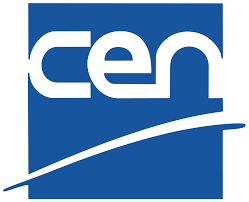
New EN standard for Stormwater boxes expected to stimulate market demand from public and private procurers
CEN has published a new set of standards for stormwater boxes. The new standards simplify the existing complicated market situation in Europe with a myriad of local standards, quality marks and approvals and make it easier for designers and purchasers to compare.
Ludo Debever, TEPPFA General Manager and Chairman of the Working Group CEST (Certification and Standardisation): “The new set of standards fills the gap to allow for an easy, transparent specification in tenders by designers, public procurers and property owners. The latest stormwater box systems meet an increasing demand for a quick and controlled water evacuation during heavy rainfall.”
The publication has excellent timing. Climate change confronts many communities all over Europe with local high precipitation over very short periods. The market therefore needed sustainable systems which collect, store and evacuate this enormous water volume in a controlled way. Plastic pipe manufacturers have developed and continuously optimized ingenious systems to meet the needs of communities and property developers for effective management of rainfall and the reduction of flood risk;
The boxes are light weight and therefore easy to handle., They can be quickly assembled on site and brick bounded to create the optimum installation for every application.
By 2009 the European market was flooded by all kind of infiltration-, attenuation- and storage boxes. Systems ranged from a very small number of boxes (0.2 m3) in a small excavation up to huge systems with 20,000 boxes (4,000m3) in one excavation. Some countries developed different national standards, quality marks, approvals and design and installation guides. The systems with different shapes, different void ratios, different durability tests, different performance times and on top, a different resistance to load, often hampered designers, purchasers, installers and future owners to decide on the specification and purchase of plastic storm water boxes.
TEPPFA therefore contacted CEN/TC155 Plastics piping systems and ducting systems to investigate the possibility of homogenising the current situation into a European Standard (EN) for stormwater infiltration, attenuation and storage boxes.
CEN/TC155 Working Group 26, which deals with systems for storm water handling, finally decided to draft one product standard and two test standards:
EN 17152-1:2019 is the new product standard that defines the specifications for storm water boxes made of PP and PVC-U used for infiltration, attenuation and storage of non-potable water. These boxes are intended for buried underground use, e.g. in landscape, pedestrian or vehicular traffic areas.The two test standards determine the compression strength of the storm water boxes. EN 17151 specifies the long-term and EN 17150 the short-term compression strength.
The combination of the three standards represents the minimum requirements for boxes and a unified way of testing for boxes used in underground infiltration, attenuation and storage systems.
The new standard defines a box as a “thermoplastic cuboid shaped element, with or without sidewalls used to create a modular system”. The definition includes open lattice structures with and without columns; honeycomb structures; plate structures and profiled sheet structures. It further includes the integral components, if present. The integral components contribute to the strength of the box.
The standard does not cover infiltration tunnels and boxes filled with aggregates.
The standard optimises the use of raw materials. The latest Circular Economy developments which call for an increased uptake of recycled content are being taken into account.
The new standard is obtainable from the 34 National Standardization Bodies at the European Committee for Standardization (CEN): CEN/TC 155 standards – sales points in Europe.
TEPPFA is a partner organization of CEN/TC 155 and has been involved in the development of many of the 222 CEN/TC 155 standards currently in use, as well as over 40 projects that are presently being worked on.



